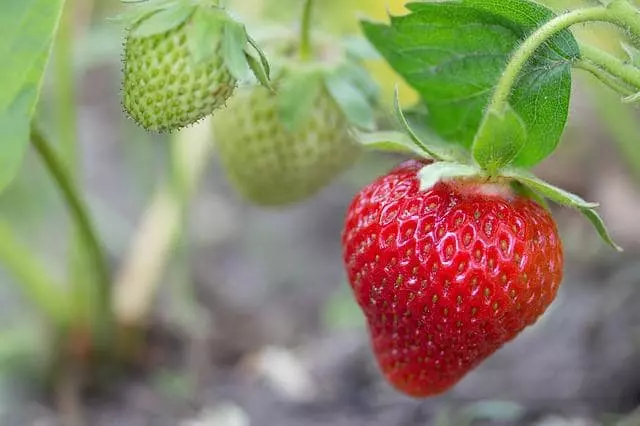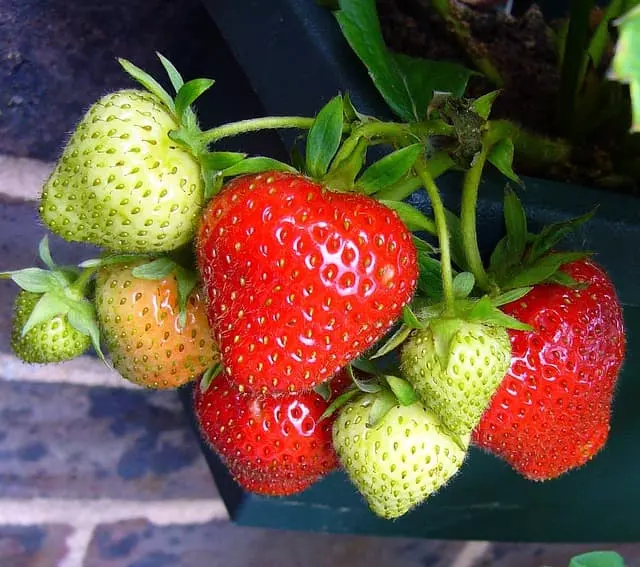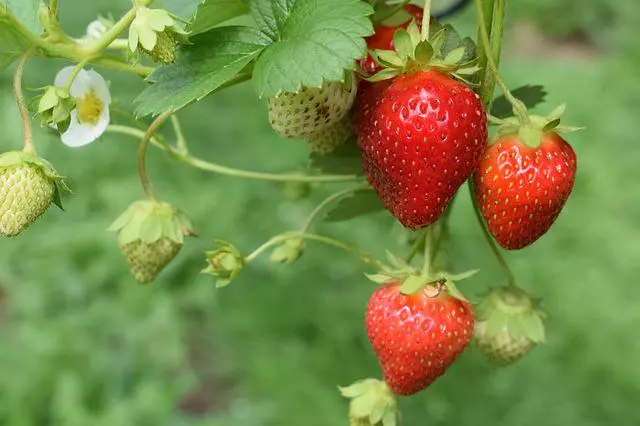Quinault strawberries are large, firm, dark red, and excellent for fresh consumption, canning, and desserts. Quinault strawberry is very resistant to diseases and cold areas. A great advantage of this strawberry variety is that you can harvest Quinault strawberries twice a year.
With the Quinault strawberry, you can obtain an abundant production of strawberries twice a year. If you want to learn more about Quinault strawberries, continue reading this article.
Table of Contents
What are Quinault Strawberries?
The Quinault strawberry was developed by Washington State University and is named after an area of Washington. This strawberry was developed to produce twice a year (like other strawberry varieties), the Quinault strawberry produces abundantly in spring and fall.
Quinault strawberries grow up to 2″ (5 cm) in diameter. These strawberries need at least 6 hours of sunlight daily and nutritious soil with good drainage. Another great advantage of the Quinault strawberry is that it is cold hardy and perennial.

Where to Buy Quinault Strawberries?
Early in the strawberry season, it is possible to get Quinault strawberry seedlings in almost any nursery or supermarket. You can also plant Quinault strawberry seeds and get your seedlings; Quinault strawberry seeds are sold all year round on the internet. Always check that seeds or seedlings have disease-free certificates.
How to Grow Quinault Strawberries
Quinault strawberries are easy to grow like most strawberries and the great advantage of Quinault strawberries is that they are more resistant to pests and diseases. To plant Quinault strawberries, use a well-drained soil rich in organic matter.
Whether planting seedlings or planting your Quinault strawberry seeds, it is important to choose a site with at least 6 hours of direct sunlight daily. Like all plants, the Quinault strawberry needs sun to develop correctly and produce abundant fruit. Ideally, it should receive 8 hours of sunlight daily.
Plant Quinault strawberry seeds outdoors after frost and indoors weeks before the last frost. Once the frost has passed, you can plant Quinault strawberry seedlings outdoors. You can also grow Quinault strawberries by stolons. Never let the soil of Quinault strawberries dry out, keep it moist but not waterlogged.
If you grow Quinault strawberries in a hot climate zone, you will probably need to protect them from the sun’s rays in the summer. Quinault strawberries do very well in zones 4-8. Zone 4 is ideal for the development of Quinault strawberries. With a little extra care, you can also grow Quinault strawberries in zone 3A, which is very cold.

How to Care Quinault Strawberry
Caring for the Quinault strawberry plant is not difficult at all, here are the tips to care for the Quinault strawberry plant:
- Plant Quinault strawberries in a place that receives 6 hours of sunlight daily.
- Never let the soil of Quinault strawberries dry out, keep the soil moist but not waterlogged.
- If you grow Quinault strawberries in an area with extreme summer temperatures, you should cover the plant during the hours when the sun is very strong, such as midday.
- During the flowering stage and while the fruits are developing, fertilize Quinault strawberries once a month.
- In late fall, mulch the soil to protect the Quinault strawberries over winter. In addition, you can protect your Quinault strawberry plants with a tarp. Learn more about how to protect plants from frost.
By following these tips, you will be able to care for your Quinault strawberry plants properly. A single Quinault strawberry plant can produce up to 200 strawberries in a year. Quinault strawberry plants have a life expectancy of approximately 10 years, but growers typically replace Quinault strawberry plants every 3 to 4 years.
Recommended reading: Best Companion Plants for Strawberries (and Plants to Avoid)

When to Harvest Quinault Strawberry?
Quinault strawberries yield two crops per year, the first harvest is in late June and early July (Northern Hemisphere). The second harvest of Quinault strawberries, which will be smaller than the first harvest, will be ready at the end of August and the beginning of September (Northern Hemisphere).
Pick only the Quinault strawberries that you see with a deep red color because the strawberries do not ripen off the plant. Use sharp and disinfected scissors to harvest Quinault strawberries, this way you will not damage the plant, and it will be able to continue producing.
Pulling strawberries off the plant by hand can damage the plant by either damaging stems or causing the plant to move and its roots to break. Always use a sharp, disinfected tool to harvest strawberries.
Frequently Asked Questions
Quinault strawberries are everbearing and are more resistant to pests than other strawberry varieties. It is also recommended to replace Quinault strawberry plants every 3 to 4 years.
Quinault strawberries will come back every year because they are perennial, so you don’t have to worry about your strawberry plants. During the winter, your Quinault strawberries will be dormant to protect them from winter.
Quinault strawberries are self-pollinating, you don’t need other Quinault strawberry plants nearby for pollination. The fact that the Quinault strawberry is self-pollinating is also an advantage in case pollinating insects are not abundant where you grow your strawberries.
We hope this article about the Quinault strawberry will be useful and that you will have an excellent harvest. We recommend our other articles about strawberries:

